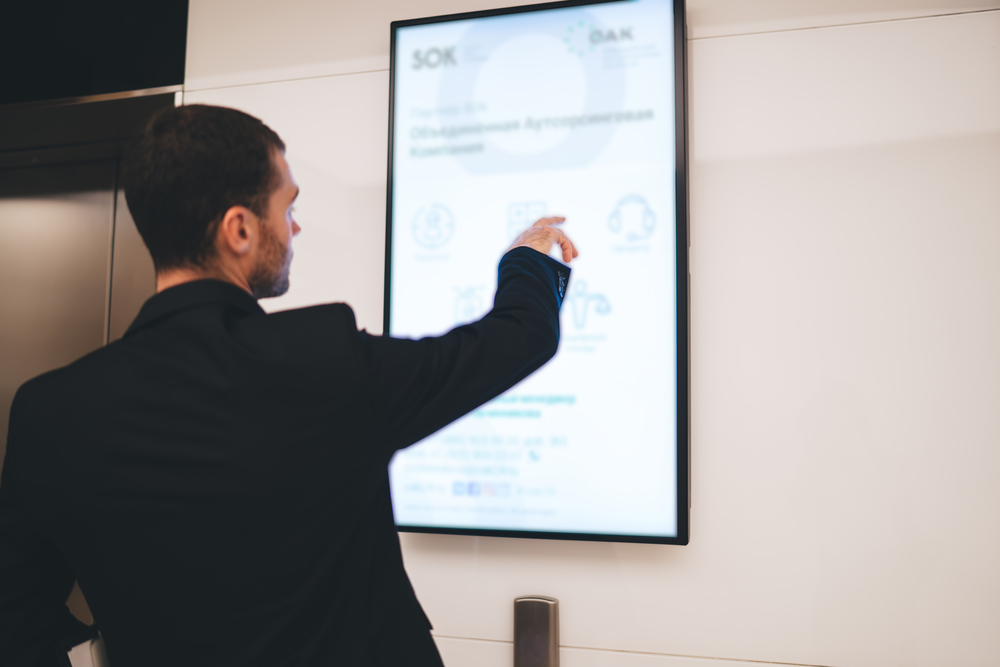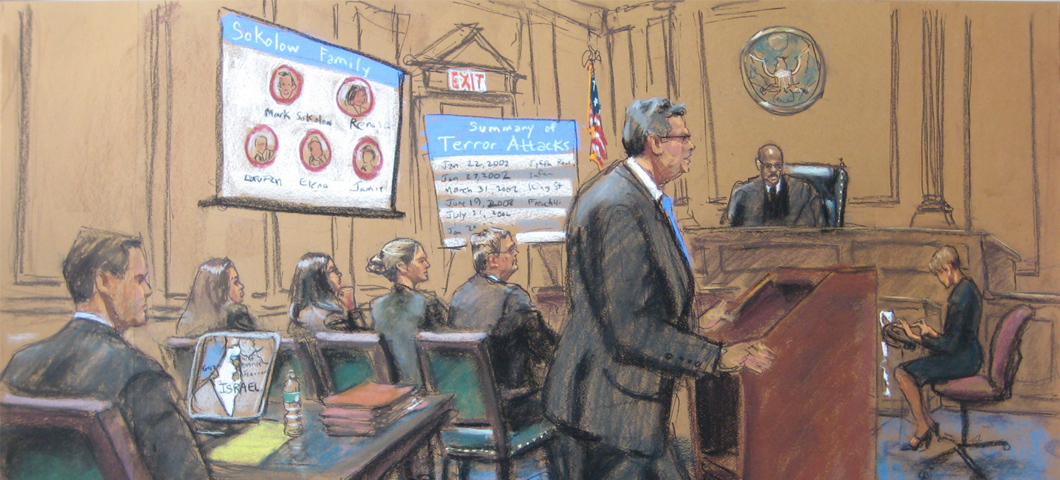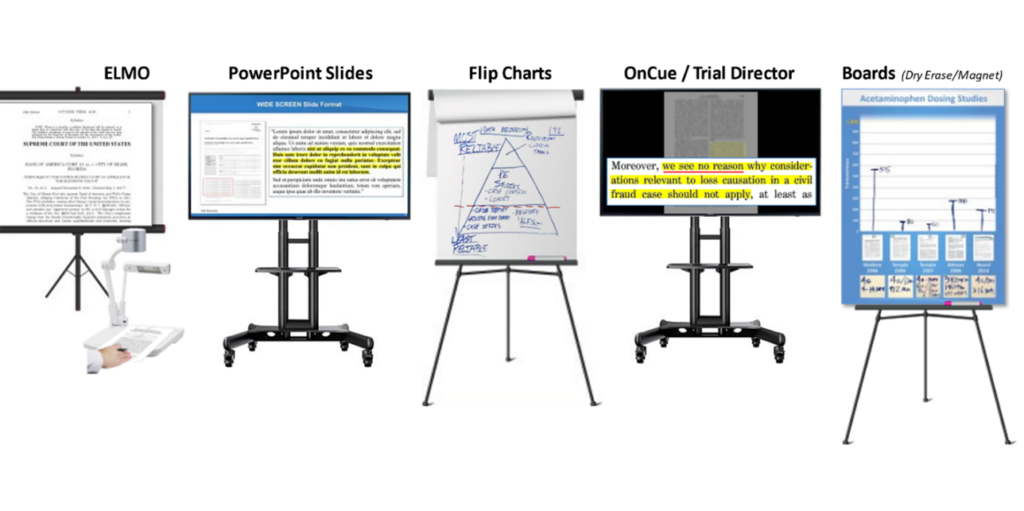Interactive trial presentations enhance case preparation.
Exactly How Test Presentations Enhance Your Disagreement and Persuade Jurors
Test discussions work as a pivotal mechanism for improving legal arguments and convincing jurors. By integrating visual help, narrative frameworks, and emotional engagement, attorneys can produce a compelling case that reverberates on numerous levels. The strategic usage of visuals not only clarifies complex details yet likewise catches jurors' focus more effectively than words alone. Nevertheless, the art of narration plays a just as essential function in changing valid proof into a compelling story, shaping jurors' understandings - trial presentations. Recognizing these elements can significantly influence test results, raising the inquiry of just how each element contributes to this detailed dynamic.

Value of Aesthetic Help
Visual aids play a vital duty in enhancing the efficiency of trial discussions, as they can significantly raise target market interaction and retention of information. In the context of a trial, where jurors are tasked with processing complex details, visual help offer to streamline and clarify bottom lines. Charts, graphs, and pictures can communicate information and ideas that might or else overwhelm or confuse jurors, enabling an extra straightforward understanding of the evidence provided.
Furthermore, visual aids help in maintaining juror interest throughout the proceedings. By breaking the dullness of verbal testimony, these devices can punctuate important arguments, making them more unforgettable. Reliable aesthetic help can additionally stimulate psychological responses, which can be pivotal in encouraging jurors to align with the speaker's story.

Crafting Engaging Stories
An engaging narrative is vital in test presentations, as it acts as the foundation of efficient persuasion. It allows attorneys to weave together facts, proof, and psychological aspects into a meaningful story that resonates with jurors. This narrative structure enables jurors to understand the complexities of the case while guiding them with the attorney's disagreement.
To craft a compelling story, attorneys ought to concentrate on clarity and comprehensibility. This entails developing a clear lead character-- frequently the customer-- and outlining their trip through the occasions concerned. Presenting the facts in a logical sequence improves understanding and maintains interaction. Furthermore, using vibrant summaries can produce mental pictures that help jurors imagine the occasions, making the narrative extra remarkable.
In addition, incorporating key styles throughout the discussion reinforces the core message and aids in retention - trial presentations. The story must not only communicate details yet also evoke a feeling of justice, highlighting the risks included. Eventually, a sound narrative fosters a link between the jurors and the situation, placing the lawyer's argument you could look here as both legitimate and engaging, thus increasing the probability of a desirable judgment

Engaging the Court Psychologically
Reliable jury interaction rests on the attorney's capacity to get in touch with jurors on a psychological level. This link can considerably affect jurors' assumptions and their utmost decision-making. Using emotional allures enables lawyers to humanize the case, changing abstract lawful ideas right into relatable experiences. By offering real-life stories or endorsements, lawyers can evoke empathy and compassion, fostering a deeper understanding of the problems at risk.
Aesthetic aids, such as pictures or videos, can additionally boost emotional engagement, supplying jurors with vivid representations of the situation's human components. Crafting a narrative that highlights the battles and accomplishments of the individuals included makes certain that jurors see beyond the legal disagreements and identify the human effects of their decisions.
In addition, tone and body movement play an important function in sharing emotion. An attorney's passionate shipment can reverberate with jurors, reinforcing their emotional financial investment in the event. It's necessary to stabilize sob stories with valid proof, ensuring that jurors feel obliged to act while staying grounded in the reality. Eventually, a mentally involved her response court is extra most likely to be encouraged, making psychological link a crucial element of reliable test discussions.
Structuring Your Discussion

The body of the discussion should be realistically segmented into bottom lines, each supported by compelling proof. It is useful to make use of storytelling methods to weave truths right into a narrative that jurors can easily comply with. Visual aids, such as charts and video clips, can improve comprehension and engagement, assisting to highlight vital pieces of evidence.
Real-World Study
Analyzing real-world situation researches supplies very useful understandings right into the art of test discussions and persuasion. The landmark case of "O.J. Simpson v. Individuals of California" illustrates exactly how aesthetic aids and compelling narratives can sway jury assumptions. The defense team efficiently straight from the source utilized a method that integrated top-level specialist testimonies with multimedia presentations, which astounded jurors and eventually influenced their decision.
One more noteworthy instance is the "McDonald's Coffee Case," where the plaintiff's attorneys used graphic pictures of the injuries sustained by Stella Liebeck. trial presentations. This plain aesthetic evidence played an important function in conveying the extent of her burns, leading to a considerable court honor. Such cases demonstrate that impactful test discussions typically pivot on the reliable integration of visuals and storytelling to evoke psychological feedbacks from jurors
In addition, the "Casey Anthony Trial" highlighted the value of narrative comprehensibility and credibility. The prosecution's failing to develop a compelling timeline diminished their convincing power, underscoring the necessity of a well-structured presentation. Examining these instances exposes that successful trial discussions call for calculated planning, psychological engagement, and the capacity to reverberate with jurors' worths and beliefs.
Conclusion
Trial discussions significantly enhance arguments and encourage jurors via the calculated usage of aesthetic aids, compelling narratives, and psychological engagement. By streamlining complicated details and fostering links with the audience, these aspects develop a memorable and impactful experience. A well-structured discussion balances sob stories with valid proof, eventually resonating with jurors' values. The assimilation of these methods not only affects decision-making however likewise underscores the relevance of reliable interaction in the court room.